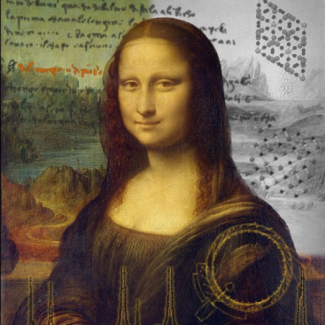
A start-up for much faster batteries
Two years after the first battery prototype using sodium ions1 in a standard industrial format was designed, the start-up Tiamat has been created to design, develop and produce this promising technology. This could counter some of the limits of the lithium-ion batteries that dominate the market today, such as recharge rate, lifetime and production cost. Specifically, sodium-ion batteries might allow mass storage of intermittent renewable energies (wind or solar) or equip electric vehicles. Located in Amiens, this company came out of the French network for electrochemical energy storage (RS2E2 ) supported by the CNRS. Today it has several tens of functional prototypes, and hopes to launch larger scale production by 2020.
- 1For more information, see http://www2.cnrs.fr/en/2659.htm
- 2Launched in 2011 upon the initiative of CNRS and the Ministry of National Education, Higher Education and Research, this network includes 17 research laboratories in France, one technology and integration research center, and one network of companies (15 companies at this date). See http://www.energie-rs2e.com/en
In November 2015, researchers who were part of RS2E, mainly from CNRS, CEA and several French universities3
, designed the first sodium-ion battery prototype in the 18650 format. That format is very widespread in industry, in particular for lithium-ion batteries. Using those lithium-ion batteries as direct inspiration, these sodium-based batteries have better performance, in particular in terms of life expectancy and charge and discharge rates. The major asset is the use of sodium, a less expensive and more abundant element than lithium (2.6 % of sodium in earth's crust, versus barely 0.06 % of lithium). What is more, sodium is found everywhere on the planet, in particular in sea water, in the form of sodium chloride (NaCl) whereas lithium resources are located in only a few regions of the globe. (Argentina, Chili and Bolivia hold two thirds of the world's lithium.)
Today's creation of Tiamat, a company dedicated to the development and production of these alternatives to lithium-ion batteries, continues this work. Its goal is not to dethrone lithium-ion batteries, which are already used in most mobile electronic devices. Tiamat is positioned on power and continuity of service because of its long-lasting batteries (more than 10 years life expectancy versus 3-4 years for lithium batteries under continuous use conditions), and 10 times faster charges and recharges. This performance opens possibilities for use in areas that have not been developed or have great room for technological development, such as stationary storage (mass storage of intermittent renewable energies, wind and solar) and mobile storage for electric vehicles (buses that can be recharged at the end of the line, for example). Tiamat is focusing on fleets of rental vehicles, which require short recharge times and need service continuity for users. With sodium-ion technology we can envisage new everyday uses, such as electric vehicles with 200 km of autonomy that recharge in a few minutes.
After these technologies are approved, the company, based in Amiens, hopes to further develop its activity there. With strong support from RS2E, it is already working in collaboration with the academics and industrials in this network. This is a first step before being able to launch production of these batteries, if possible in France, which would make France a leader in these new energy storage solutions.
The research work has been issued as several publications and patents by CNRS and the CEA. It has received support from the Ministry of Higher Education, Research and Innovation4
, CNRS, CEA, the Agence Nationale de la Recherche (Labex Store-Ex) and the DGA (Direction Générale de l'Armement). CNRS is one of Tiamat's shareholders.


- 3Eight laboratories and entities involved: six French laboratories from the RS2E network (Institut de Chimie de la Matière Condensée de Bordeaux (CNRS), Laboratoire Réactivité et Chimie des Solides (CNRS/Université de Picardie Jules Verne), Centre Interuniversitaire de Recherche et d'Ingénierie des Matériaux (CNRS/Université de Toulouse III - Paul Sabatier/INP Toulouse), Laboratoire Chimie du Solide et de l'Energie (CNRS/UPMC/Collège de France), Institut Charles Gerhardt Montpellier (CNRS/Université de Montpellier/ENSC Montpellier) and Institut de Sciences des Matériaux de Mulhouse (CNRS/Université de Haute Alsace), Rosa Palacin, researcher at the Institut des Sciences des Matériaux de Barcelone and Liten, Institut de CEA Tech.
- 4Tiamat was one of the 62 prizewinners for 2017 in the national i-Lab competition for helping to create innovative technology companies, organized by the Ministry of Higher Education, Research and Innovation.

